Marketing Analytics Strategist
How to use the new Google Analytics
Marketing Analytics Strategist
You’ve probably already heard, since it was THE big announcement from Google for their Google Analytics (GA) product last year: a new property type has launched. If you’re a GA user and you missed this announcement, take the time to read this article start to finish – we’re dealing with something much bigger than just a new functionality.
Essentially, this announcement revealed the direction Google will be taking with its flagship measurement tool going into the future, and it appears that, to say the least, change is in the air. A new data model, unification of data from different formats, new analysis tools on steroids… Keep reading, we’ll tell you everything you need to know.
What does App + Web mean?
App + Web is a new property type launched by Google last summer. It aims to consolidate data from websites and mobile apps into a single data model and within a single reporting environment.
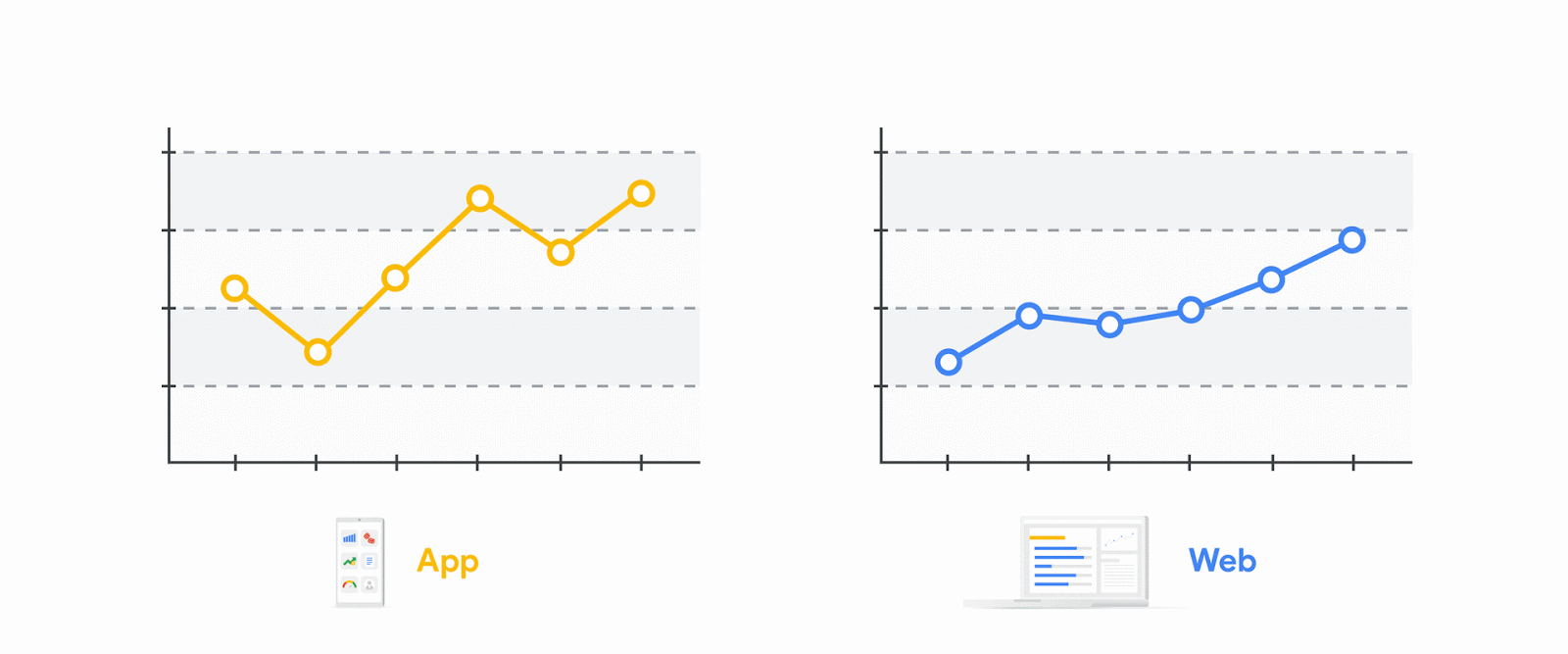
Source: Google
Currently, many companies measure website engagement with Google Analytics and app engagement with Google Analytics for Firebase. Separately, each of these products provides valuable information, but it’s complicated to get a unified picture of engagement across your different platforms. That’s one of the challenges Google wants to solve with App + Web.
Don’t let the name confuse you, this new property is also extremely worthwhile even if you only have a website, thanks to the many new elements it introduces.
There’s a lot that’s new
As mentioned above, this new property type introduces a lot that’s new. Let’s do a quick review of the biggest things.
A new data model for greater flexibility
Up until now Google Analytics has been based around the concept of sessions, but the new version uses a far more flexible alternative: the idea of users and their actions (events), in combination with parameters to enrich the data collected.

The strength of an event-based schema is that any element that’s linked to data for a particular area of activity can be turned into an event. It opens up any number of possibilities in terms of advanced analytics capacity and scalability.
This is a departure from a standard data structure that requires specialized collection and analysis based on a particular schema (Google Analytics and it’s scope of data).
Essentially, whether the events are taken from your website or another point of contact with your business (interactions in store, with a customer service agent, etc.) anything can be turned into an event, and analyzed in a similar, simplified way.
New, advanced reports for more accessible insights
Google Analytics App + Web comes with a host of new reports called “Analysis,” that allow you to conduct advanced analyses:
Exploration
Drag and drop multiple variables onto a canvas to get instant visualizations.
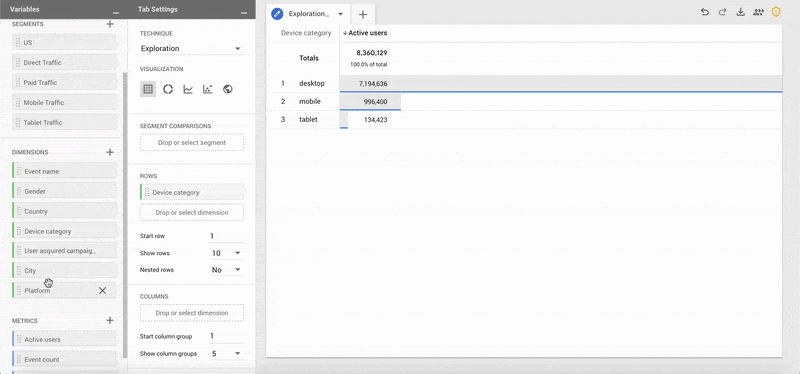
Source: Google
Funnels
Identify the most important steps leading up to a conversion and understand how users navigate between them.
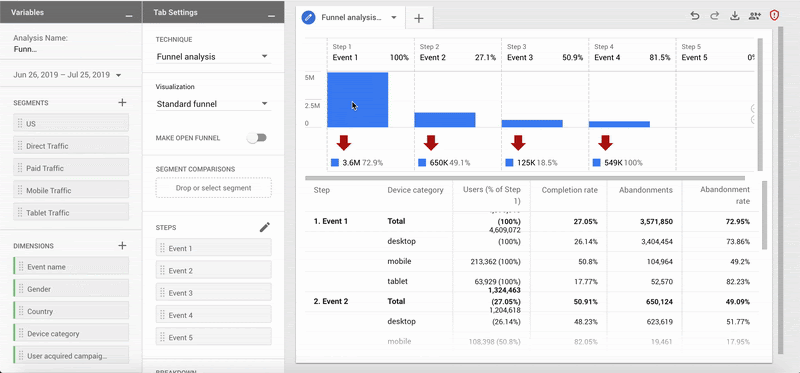
Source: Google
You no longer need to configure static funnels in advance to be able to visualize the different steps – now you can build them dynamically through a simple drag-and-drop interface and have results appear instantly before your eyes.
Pathing
Explore the flow of your users’ actions to identify their most common navigation paths and remove any obstacles that might come up.
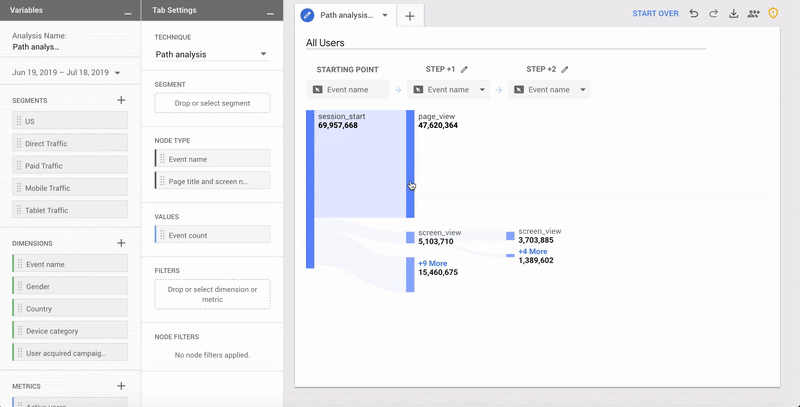
Source: Google
In comparison with the previous user flow reports available in Google Analytics, this version is far more intuitive and interactive, with the option of conducting analyses from different viewpoints (events, pages, etc.). You can also work in reverse: start with the conversion and work backwards to identify the interactions that preceded it.
A powerful new audience-creation tool
A new version of what is currently “Segments” in Google Analytics.
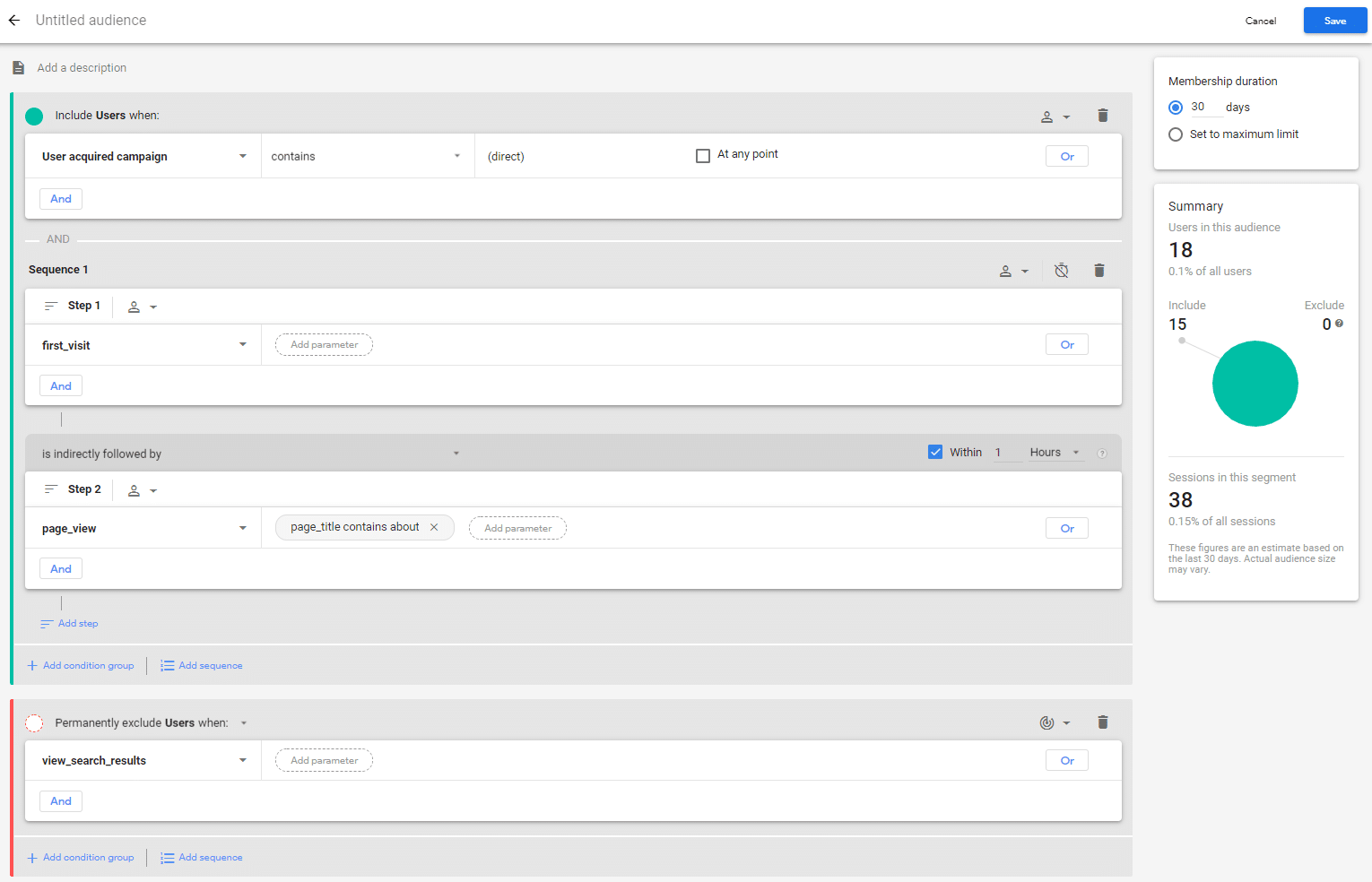
This new tool has several advantages, including the option of adding conditions for time lapsed between actions, temporary or definitive exclusion of certain users, etc. It’s an excellent addition to help you push your analyses further.
Advantages and limitations of the new properties
One very important thing to remember at this stage, is that App + Web properties are currently still in Beta. What does that mean? Simply that the tool still isn’t mature enough to be your primary measurement tool, and that it is sure to undergo many changes over the coming months.
If you compared the current Google Analytics to the new version in its current state, here’s what you’d get:
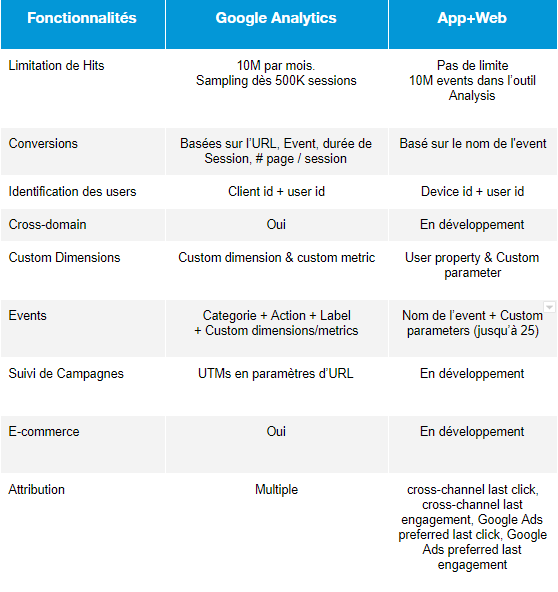
One more advantage that shouldn’t be underestimated: a BigQuery connection is currently available for all App + Web users, and not just for GA360 customers as has always been the case (no guarantee that it will stay this way though, remember that this is still a Beta). As explained in this article, opening the door to BigQuery (or any other data warehouse) offers tons of possibilities in terms of advanced analysis.
What should you do about App + Web?
As mentioned above, App + Web properties are currently still in Beta. What does that mean? Simply that the tool still isn’t mature enough to be your primary measurement tool. However, as you’ve seen in this article, it already has a whole slew of very useful functionalities that you can take advantage of right away.
As we’ve also mentioned before, this is not just a new feature in Google Analytics, but a brand new direction for the tool. This means that, sooner or later, the current version of GA will be obsolete, and replaced by App + Web. The question isn’t so much whether this will happen, as when.
Given all this, what should you be doing? Well, start collecting data in the new format now, by putting a parallel implementation in place. You’ll benefit twice over: you’ll benefit from the new functionalities of the tool, while creating a bank of data that will make it far easier to transition in the future, all while keeping your current implementation running to see you through until the new product comes out of Beta and is completely functional.




